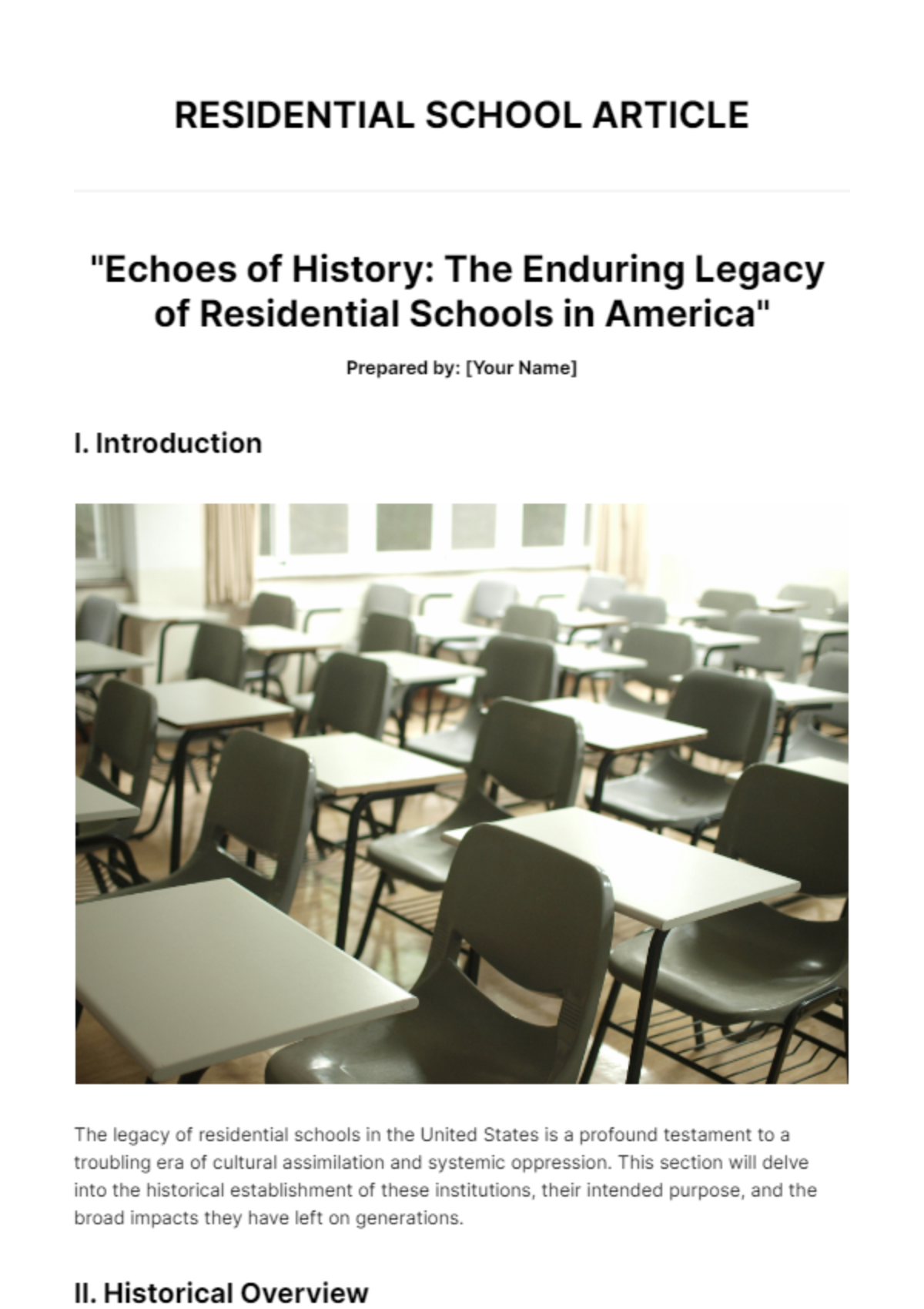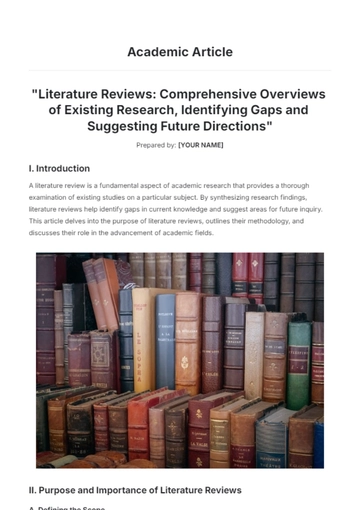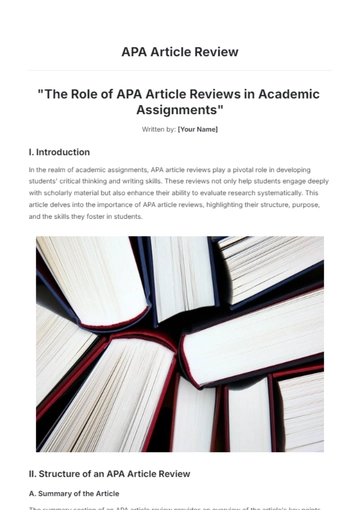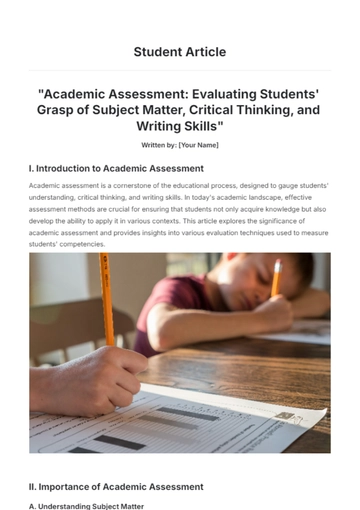RESIDENTIAL SCHOOL ARTICLE
"Echoes of History: The Enduring Legacy of Residential Schools in America"
Prepared by: [Your Name]
I. Introduction

The legacy of residential schools in the United States is a profound testament to a troubling era of cultural assimilation and systemic oppression. This section will delve into the historical establishment of these institutions, their intended purpose, and the broad impacts they have left on generations.
II. Historical Overview

A. Establishment and Operation of Residential Schools
Residential schools were established in the late 19th century with the goal of assimilating Native American children into the dominant American culture's ways of life. Managed by government agencies such as the Bureau of Indian Affairs (BIA) and religious organizations, these schools operated under the policy of "Kill the Indian, Save the Man."
B. Key Figures and Laws
Significant figures in the formulation and execution of the residential school policy included Richard Henry Pratt, founder of the Carlisle Indian Industrial School, while pivotal laws included the Indian Removal Act of 1830 and the Dawes Act of 1887. These frameworks provided the legal backing that sustained these schools for decades.
III. Impact on Communities

A. Immediate Effects
The immediate effects of these institutions were largely detrimental. Families were torn apart as children were forcibly taken from their homes, leading to a loss of cultural identity, language, and family bonds. Psychological and physical abuse reported by survivors has had long-standing effects on the communities involved.
B. Long-term Social Implications
The long-term social implications of residential schools include:
Loss of cultural practices and languages
Persistent socio-economic challenges
Intergenerational trauma and its continued impact on education, health, and community cohesion
IV. Remediation and Future Directions
A. Truth and Reconciliation Efforts
Efforts such as the Truth and Reconciliation Commission in 2050 have been pivotal in acknowledging the injustices and paving the way for healing. Key recommendations from the commission include:
Enhanced support for mental and physical health services for survivors
Revitalization of indigenous languages and cultural practices
Reforms in child welfare concerning indigenous families
B. Current Initiatives and Community Movements
Current initiatives aimed at healing and restoration involve numerous community-driven projects such as the Red Road to Wellbriety Project, which focuses on education, cultural revival, and legal reforms.
V. Statistical Representation
According to a recent study conducted by the National Native American Board, the following table illustrates the breakdown of intergenerational trauma experienced by Native American individuals:
Types of Intergenerational Trauma | Percentage |
|---|
Loss of cultural practices and languages | 65% |
Persistent socio-economic challenges | 70% |
Psychological and physical abuse | 50% |
VI. Conclusion
The narrative of residential schools in the United States is a stark reminder of a not-so-distant past that continues to echo in the lives of its survivors and their communities. Understanding this part of our history is imperative in moving towards a future where such atrocities are never repeated and healing can truly occur. The continued commitment to acknowledging and addressing these impacts, both from within the affected communities and by the broader society, remains essential.
For inquiries contact me at [Your Name] at [Your Email].
Article Templates @ Template.net

































